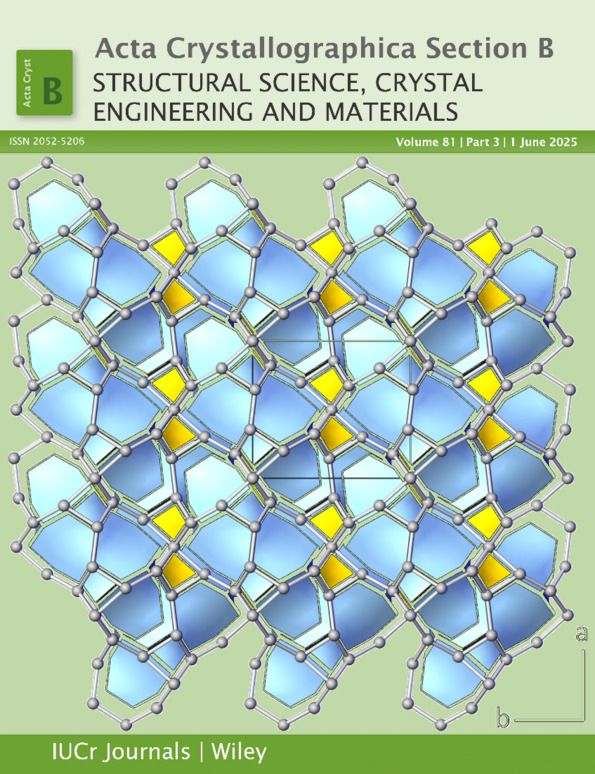Effect of the transition metal on the structure and order–disorder phase transition in layered hybrid metal halides (CH3CH2NH3)2[MCl4] (M = Mn and Co)
Abstract
Layered hybrid organic–inorganic metal halides (CH3CH2NH3)2[MnCl4] and (CH3CH2NH3)2[CoCl4] were synthesized by the slow evaporation method to understand the relationship between the crystal structure and order–disorder phase transition. Calorimetric data and crystal structure determination across the phase transition temperature establish the order–disorder phase transition. (CH3CH2NH3)2[MnCl4] undergoes the reversible structural phase transition from tetragonal I4/mmm to orthorhombic Pbca at 212/222 K (cooling/heating), whereas (CH3CH2NH3)2CoCl4 demonstrates the phase transition at 220/239 K from orthorhombic Pnma to orthorhombic P212121. Both compounds are characterized by disordered ethyl ammonium cations in the structure above the phase transition temperature, whereas they become ordered cations at temperatures below the phase transition. Dielectric results further support the observed structural phase transitions. Additionally, magnetic measurements show canted antiferromagnetic characteristics for (CH3CH2NH3)2[MnCl4] and paramagnetic behaviour is observed for (CH3CH2NH3)2[CoCl4]. The structural differences, the role of intermolecular interactions and the effect of transition metals on the phase transition were evaluated using Hirshfeld surface analysis and the topological properties of electron density distributions. An accurate description of the structure and intermolecular interactions is crucial for understanding the physical properties and designing multifunctional hybrid organic–inorganic metal halide perovskites.




